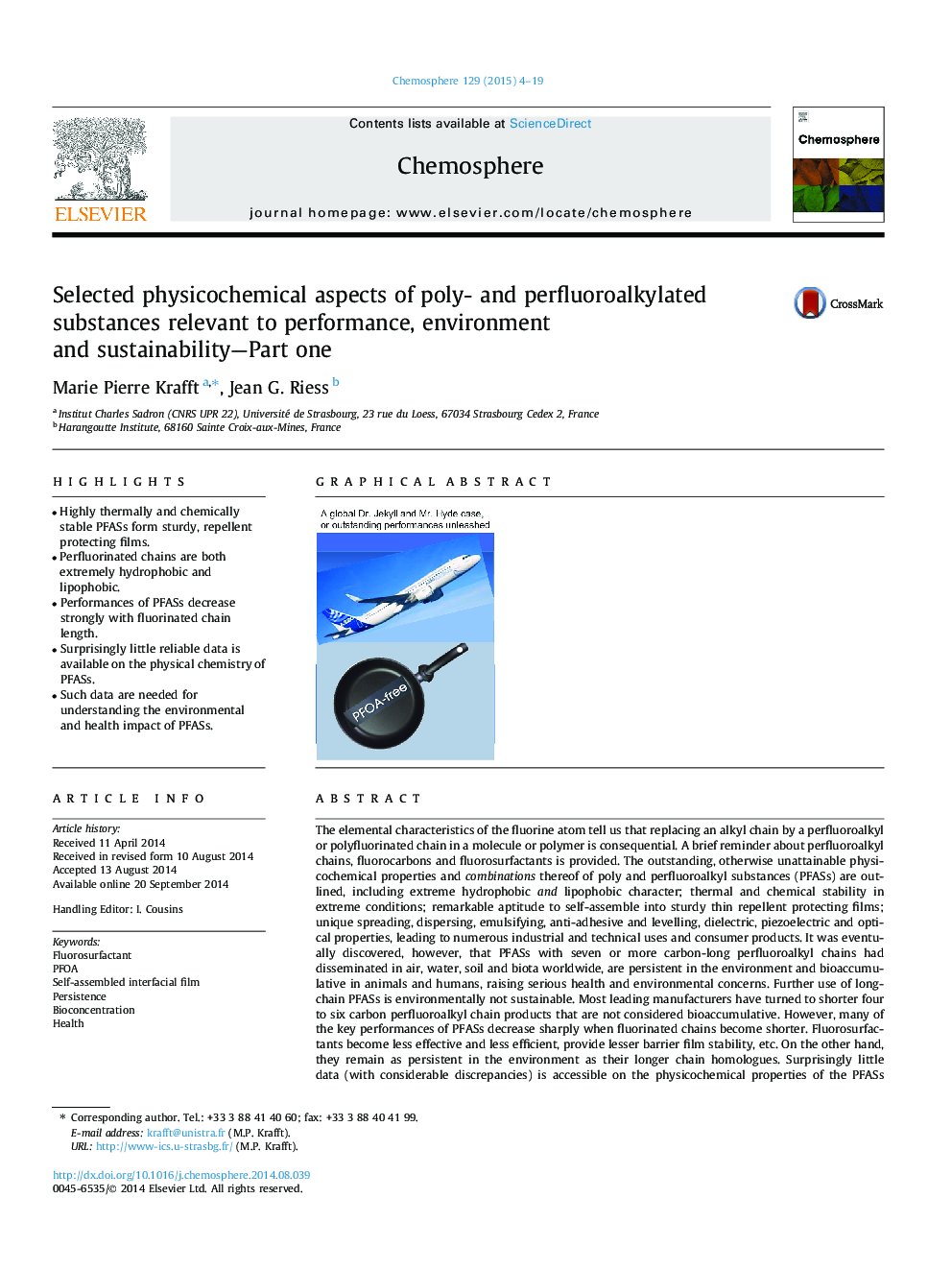| Article ID | Journal | Published Year | Pages | File Type |
|---|---|---|---|---|
| 4408429 | Chemosphere | 2015 | 16 Pages |
•Highly thermally and chemically stable PFASs form sturdy, repellent protecting films.•Perfluorinated chains are both extremely hydrophobic and lipophobic.•Performances of PFASs decrease strongly with fluorinated chain length.•Surprisingly little reliable data is available on the physical chemistry of PFASs.•Such data are needed for understanding the environmental and health impact of PFASs.
The elemental characteristics of the fluorine atom tell us that replacing an alkyl chain by a perfluoroalkyl or polyfluorinated chain in a molecule or polymer is consequential. A brief reminder about perfluoroalkyl chains, fluorocarbons and fluorosurfactants is provided. The outstanding, otherwise unattainable physicochemical properties and combinations thereof of poly and perfluoroalkyl substances (PFASs) are outlined, including extreme hydrophobic and lipophobic character; thermal and chemical stability in extreme conditions; remarkable aptitude to self-assemble into sturdy thin repellent protecting films; unique spreading, dispersing, emulsifying, anti-adhesive and levelling, dielectric, piezoelectric and optical properties, leading to numerous industrial and technical uses and consumer products. It was eventually discovered, however, that PFASs with seven or more carbon-long perfluoroalkyl chains had disseminated in air, water, soil and biota worldwide, are persistent in the environment and bioaccumulative in animals and humans, raising serious health and environmental concerns. Further use of long-chain PFASs is environmentally not sustainable. Most leading manufacturers have turned to shorter four to six carbon perfluoroalkyl chain products that are not considered bioaccumulative. However, many of the key performances of PFASs decrease sharply when fluorinated chains become shorter. Fluorosurfactants become less effective and less efficient, provide lesser barrier film stability, etc. On the other hand, they remain as persistent in the environment as their longer chain homologues. Surprisingly little data (with considerable discrepancies) is accessible on the physicochemical properties of the PFASs under examination, a situation that requires consideration and rectification. Such data are needed for understanding the environmental and in vivo behaviour of PFASs. They should help determine which, for which uses, and to what extent, PFASs are environmentally sustainable.
Graphical abstractFigure optionsDownload full-size imageDownload as PowerPoint slide
